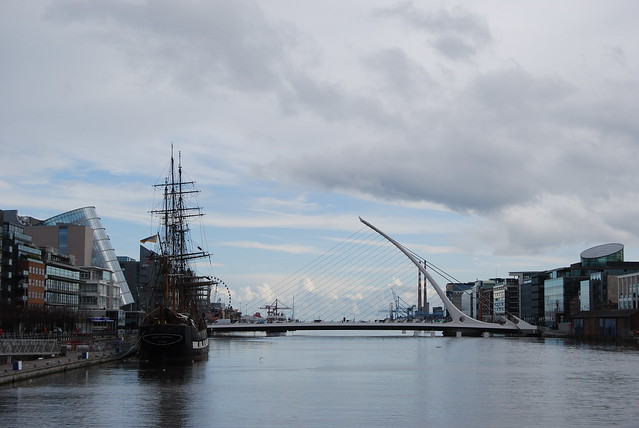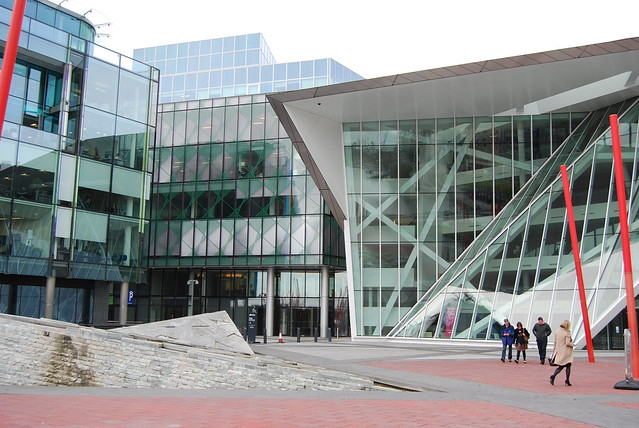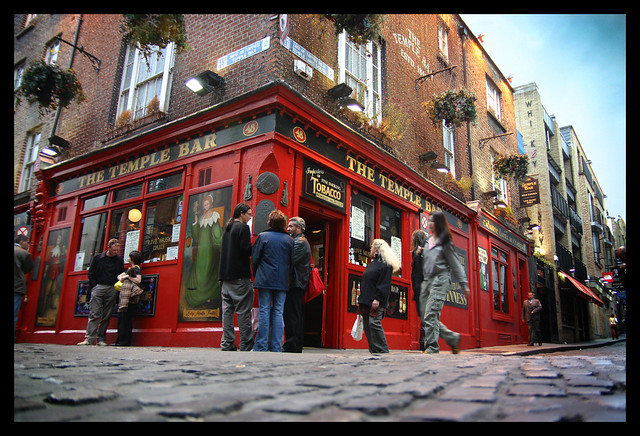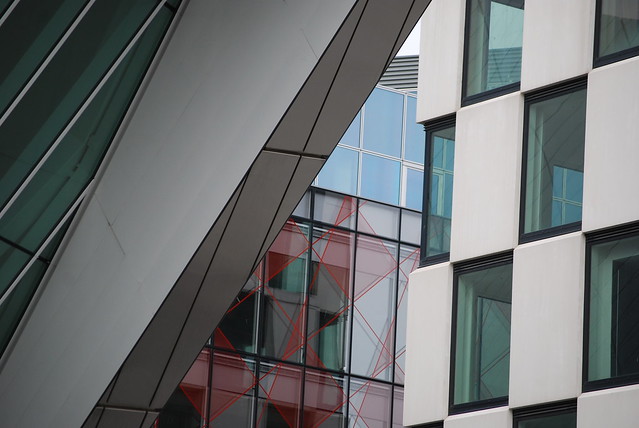 |
| Samuel Beckett Bridge over the River Liffey in the Dublin Docklands designed by Santiago Calatrava; architect of the Milwaukee Art Museum and Athens Olympic Campus |
Over the past few days I was in Dublin with my classmates and a few professors looking at a few districts in the city center. The Irish capital developed along the River Liffey as its east-west spine and for the past few decades until the country's financial collapse this development exploded with billions of euros of investment and designs from big name architects. The Dublin Docklands authority was created by the city to buy up underutilized land along the waterfront (which was avoided in the 1980's) and transform the area into a business and commercial district. As you can see from the images below, high design and relative high-rise (8-10 story buildings) have covered the landscape surrounding the river and a few public spaces. Unfortunately, the failure of the economy has left many of the offices and residences that were recently built to remain uninhabited as prices have not followed the decline in the economy.

 |
| Daniel Libeskind's new Grand Canal Theater building to the right. Known for his angular forms, other works include the Holocaust Museum in Berlin and the master plan for Ground Zero. |
The other area of our study was further west down the river along the south bank in an area known as Temple Bar. This portion of the city center retained much of its character. A master plan created for the area in 1991 preserved any existing structures, designed public spaces in a number of the voids, and introduced a number of well designed housing complexes in the area. Today it is a very popular area to visit and stay for tourists because of its pedestrian friendliness and number of pubs and shops.
 |
| Photo by Mr Din. The hostel we stayed at is along the very right edge of this image. |






No comments:
Post a Comment